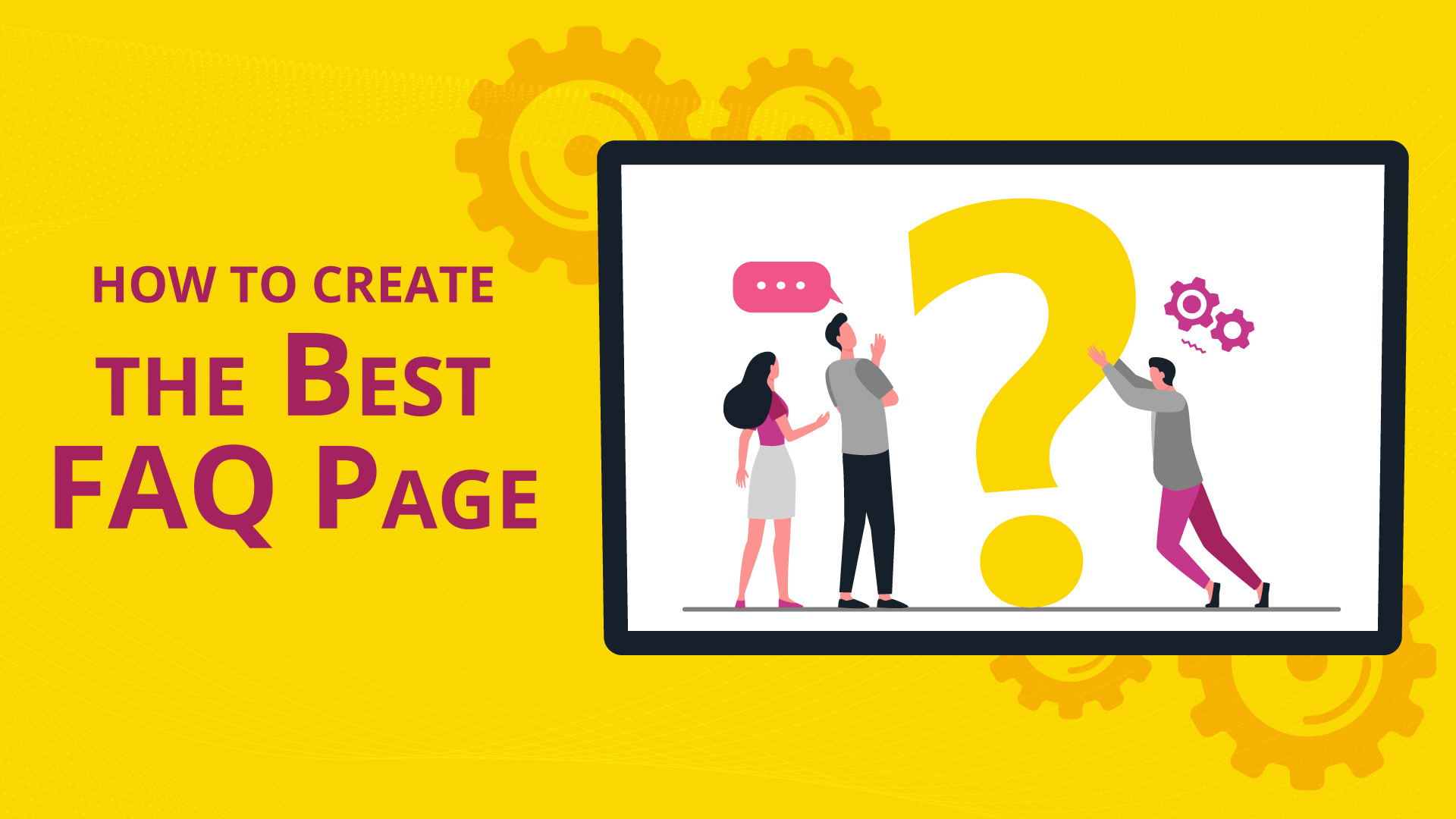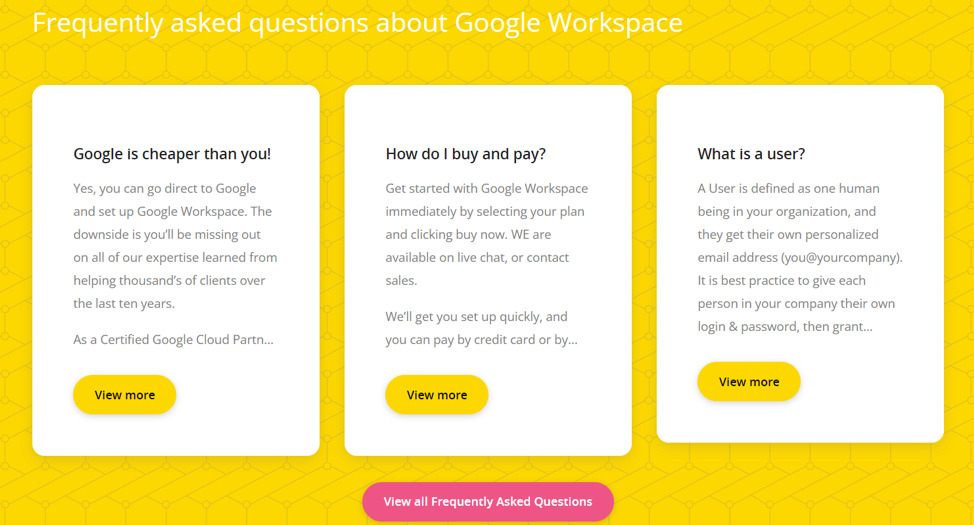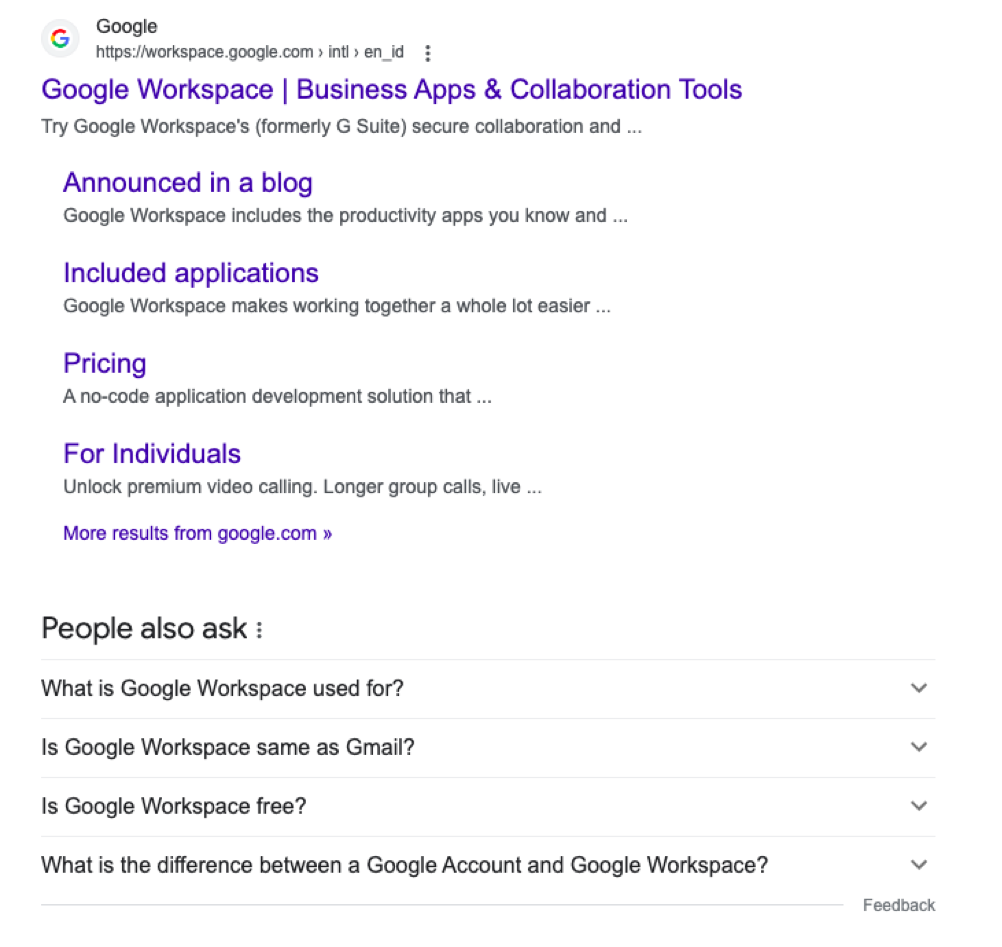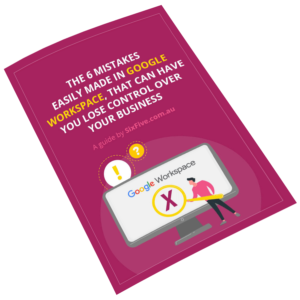
A page dedicated to your customers’ Frequently Asked Questions (FAQs) is mutually beneficial. Besides bringing a better experience to website visitors and existing customers, a FAQ page can lower customer service costs for the business that implements it.
A common goal of an FAQ page is to minimise the number of customers who need to call customer service for help. This can take a load off your reps, which will allow them to focus on interactions that actually require human contact.
As with every page, however, not all FAQ pages are customer-centred. A bad page can actually turn prospective customers away, defeating its central purpose. Don’t go through the trouble of crafting a great website, only to cop out on your frequently asked questions!
In this article, we’ll share better practices you can follow on your FAQ page to deliver the most value to your customers.
Address Your Commonly Asked Questions
This may seem obvious, but it’s not. So many business owners address “common” questions based on their own perspective. Instead, you need to have answers to what your potential and existing customers want to know.
There are plenty of ways to uncover the right questions, which include going through:
Ticket Systems
Direct messages
Customer surveys
Customer interviews
Emails
Online listening (social media comments, blog post comments, and online reviews)
Which questions come up the most often? You can use a spreadsheet to tally and rank the most frequently asked questions, addressing them on your page by relevance.
Write Clear, Concise Answers
You’ll want to aim for concise yet informative answers, as readers don’t want to be overwhelmed by blocks of text. They want their most pressing questions answered right away – ideally without having to contact a chatbot or a salesperson.
Here’s a great example of a concise answer from Hubspot’s Knowledge Base:

Notice how the question is answered succinctly while also including handy links to related FAQ pages, should users need more information. Hadn’t they offered additional resources, this section would have required a long-winded answer.
(Note that, if a specific question requires a longer answer, don’t omit information for the sake of brevity. Make the text as long or short as it needs to be in order to provide a complete answer.)
Categorise Your Answers
Splitting your questions up into categories makes it easier for people to find the answers they’re
looking for.
If you go to the FAQ page at Etsy, you’ll notice how they organise their most relevant questions into visible categories – like shipping, order status, and returns. This way, page visitors can jump straight to the section that answers their most important questions.
The page’s design makes it even more user-friendly, providing a full overview of all categories.

Always Keep Your Page Updated
Customers are humans, which means they’re ever-changing and unpredictable. Your FAQ page should reflect those changes.
Your visitors’ and customers’ questions will change based on a number of factors, including:
Your potential and existing customers’ needs
Shifts in the market
Changes in the positioning of your solutions
Changes in target audiences
The offering of new products or services
With that in mind, remember that your FAQ page is a living document. It should change as often as your business does!
By the Way: FAQs Don’t Only Belong on an FAQ Page
Snippets of your FAQs on your landing, sales, and checkout pages can work as fantastic trust-builders. They don’t take a lot of space, but they can still answer the questions that are top-of-mind for your visitors.
As an example, we have a landing page about our Google Workspace plans where we’ve only included three of our primary questions. Our visitors have the option to click through to the actual FAQ page if they need more information.

Bonus: FAQ’s help in the Google Search
As well as answering questions about your specific services using your branding, you should create some generic FAQs to answer questions related. For example we have an FAQ answer to the question “What is Google Workspace”. With the right code on the page using Structured Data your FAQ then is adding value to your page, but also answering a common question. Google looks upon this favourably and you are then in with a chance of appearing in the “People also ask“ section of the search results.

In conclusion, any FAQ page will perform better if you know who’s coming to your site – as well as which questions they need answered. So you can smash objections as they arise, and save your customer service reps plenty of time to focus on more humanised interactions.

